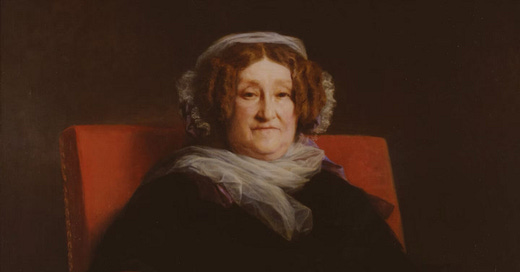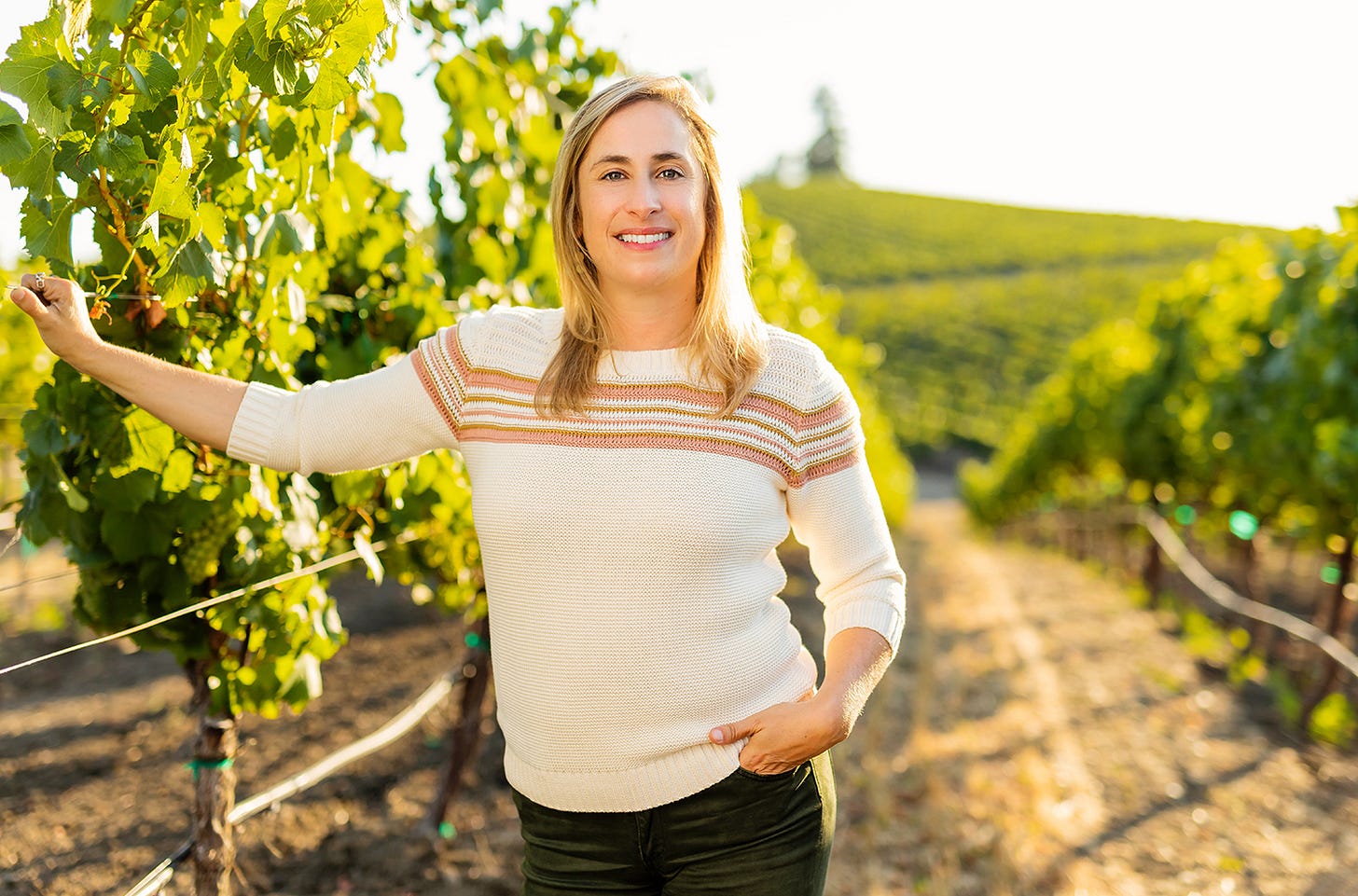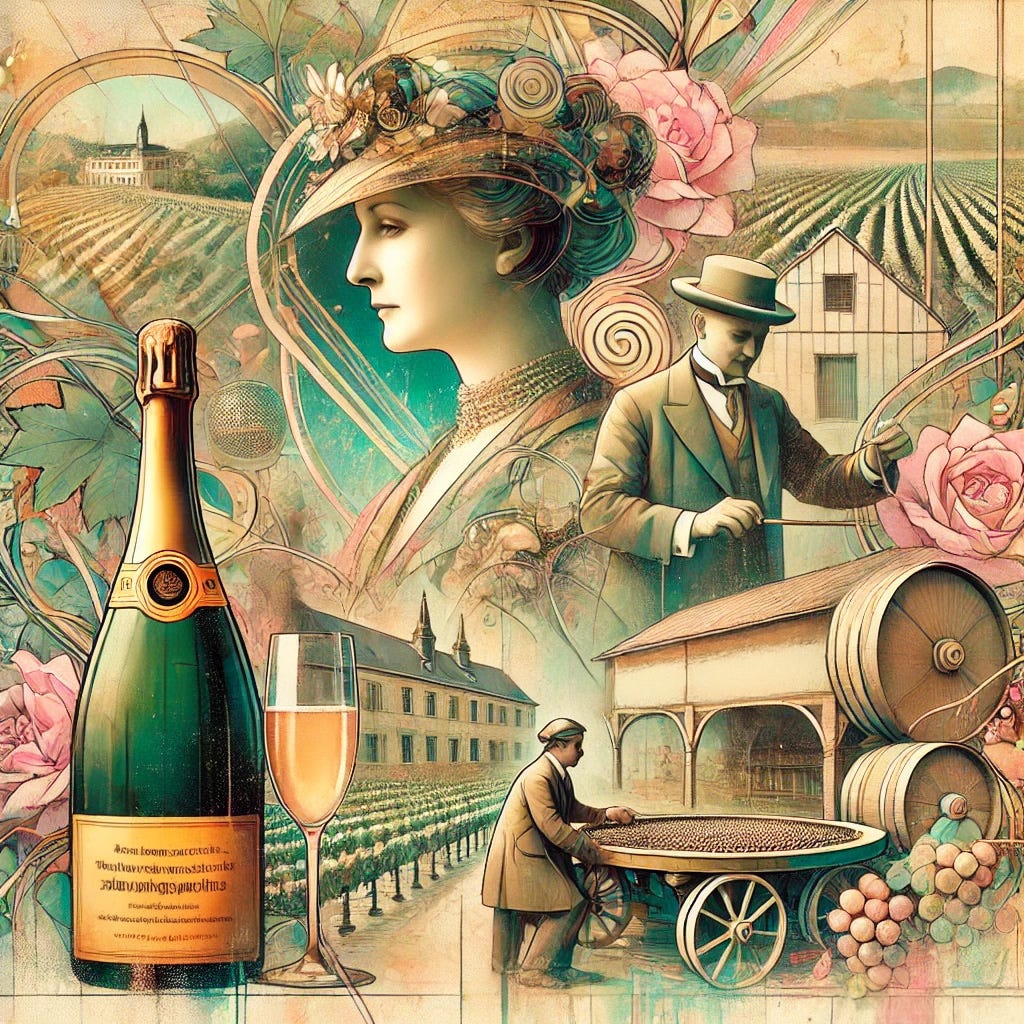NAPA VALLEY, Calif — If last summer was all about “Barbie,” this summer, at least for enophiles, could be considered the summer of Champagne and a certain widow who helped revolutionize its rise.
The “Widow Clicquot” is currently showing at various venues in the area, including the Cameo Cinema in St. Helena, with final screenings tonight at 5:00 p.m. and 7:45 p.m. The film is based on the bestselling biography, “The Widow Clicquot: The Story of a Champagne Empire and the Woman Who Ruled It,” by Tilar J. Mazzeo. The widow in the title is one of the world’s great women in wine, Barbe-Nicole Clicquot Ponsardin, the Veuve – or Widow – Clicquot, who lived from 1777 to 1866.
As Mazzeo describes in the book’s prologue: “It was the story of a woman raised to be a wife and mother, left widowed before thirty with a small child, with no training and little experience of the world, who grasped firmly at the reins of her own destiny and, through sheer determination and talent, transformed a fledgling family wine trade into one of the great Champagne houses of the world. Here, I thought, is a woman who refuses to compromise.”
Now an associate professor at Colby College in Maine, Mazzeo grew up in the Midwest but later moved to Sonoma County, where she did research for the book at the Healdsburg Wine Library. After that she traveled to France to dig deeper into the cellars and bookshelves of Champagne.
She was mostly in search of “not just how a young, sheltered woman broke free from the life other people had charted for her, but why.”
The answers she found were astounding: “a woman with no formal business training and no firsthand experience (who) transformed a struggling and small-time family wine brokerage into arguably the most important champagne house of the nineteenth century in just over a decade.”
Her legacy lives on with women across the wine world, including here in Napa Valley.
“The story and legacy of the Widow Clicquot is important not only to recognize her advancements to the traditional method of producing Champagne but to celebrate her impact on women in business in general,” said Remi Cohen, CEO of Domaine Carneros. “After the death of her husband, she triumphed against adversity and turned a struggling vineyard into a global brand, despite the laws and cultural norms against women running businesses in the early 1800s.”
Founded in 1987, Domaine Carneros is dedicated to producing sparkling wines using the traditional method founded in France.
“At the time, the Taittinger family entrusted Eileen Crane to be the founding winemaker,” Cohen said. “Eileen was one of the first women winemakers in Napa Valley, and her trailblazing success began the legacy of female leadership at the winery. With Vitalie Taittinger at the helm of our parent winery Taittinger, we collectively celebrate the impact and success of women in the wine business, including the pioneering spirit and success of Madame Clicquot.”
The film was shot entirely on location in France and is directed by Thomas Napper from a screenplay written by Erin Dignam that draws from Mazzeo’s material. It stars Haley Bennett as the widow, alongside Tom Sturridge, Sam Riley, Anson Boon, Leo Suter, Paul Rhys, Natasha O’Keeffe and Ben Miles.
“I saw it immediately as a unique and personal ghost story, full of emotion and very much tied to the psychogeography of the house and the vineyard where she lived,” said Napper in a director’s statement. “Fundamentally this is about relationships: one with the past – the husband – and the other with the widow’s mentor and distributor in the present – Louis Bohne. But ultimately, this is about Barbe-Nicole’s transformative relationship with herself and her work, the vines, arriving into her own power, her own identity and creating her own incredible legacy.”
The movie departs from the book in certain ways, such as playing up a romance between the widow and Bohne, a wine salesman and dear friend of her late husband, Francois.
But it is deliberate in showing her fierce spirit and entrepreneurship in such things as inventing the riddling table (table de remuge), which allowed her to get her bottles to market faster than her competition. She was also the first to release a vintage Champagne and the first-known rosé Champagne.
Today, rare Veuve Clicquot vintages are called “La Grande Dame” in honor of Barbe-Nicole Clicquot Ponsardin. The current release is a 2015 rosé. Grab a bottle and go see the movie.
If today’s story captured your interest, explore these related articles:
Virginie Boone writes about the wines, spirits and people of the Napa Valley and beyond. Follow her Instagram @virginieboone or visit virginieboone.com








Without taking away from contributions of any producer here, long before 1987, Jack and Jamie Davies were true pioneers in 1965, being the first to make methode Champenoise style, as they do in the Champagne. Not only the first in Napa Valley, but in the U.S.. They were the first to use Chardonnay in production (they initially used the only Chard grown in Napa at the time, a little bit grown experimentally at Krug). While many may credit Jack as the winemaker, Jamie was totally involved every step of the way. They did not have the support of an established company in France to launch their winery, but they did go to the great Houses of Champagne repeatedly to gain the skills necessary for making their product as true to the traditional method as possible, including aging in caves and, of course, riddling by hand. Jamie ran Schramsberg as a widow after Jack's passing in 1998 before handing the reins to son Hugh several years later. Cheers to our first women winemakers!
Will definitely include Domaine Carneros among destination wineries when friends visit. Great story!